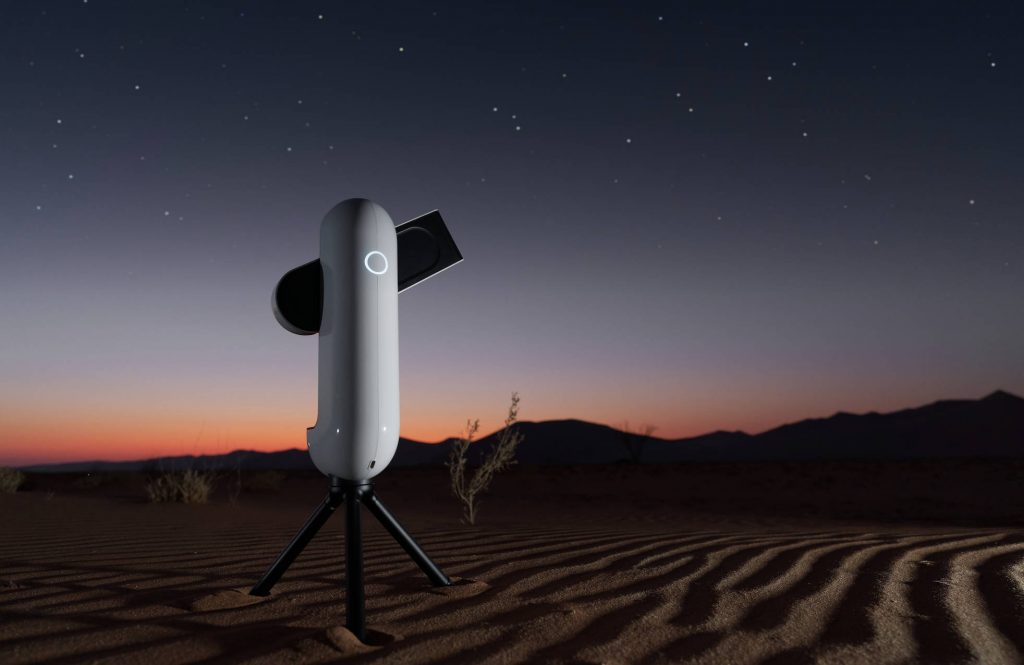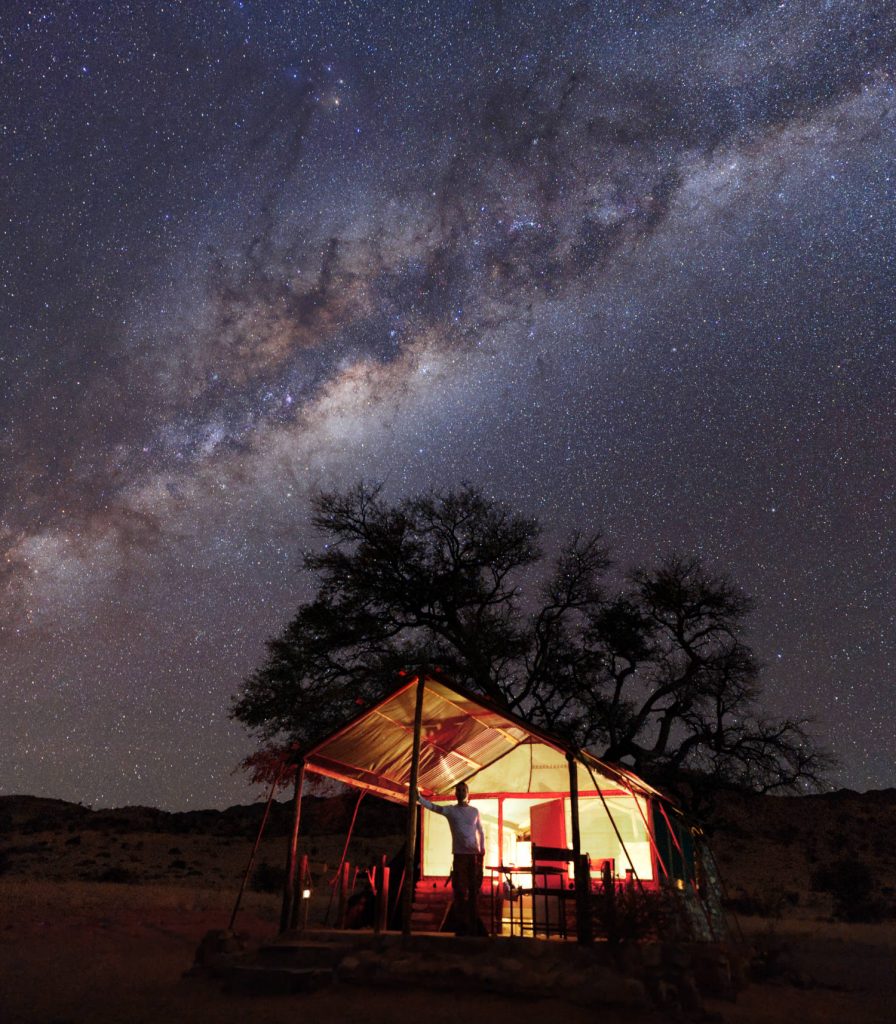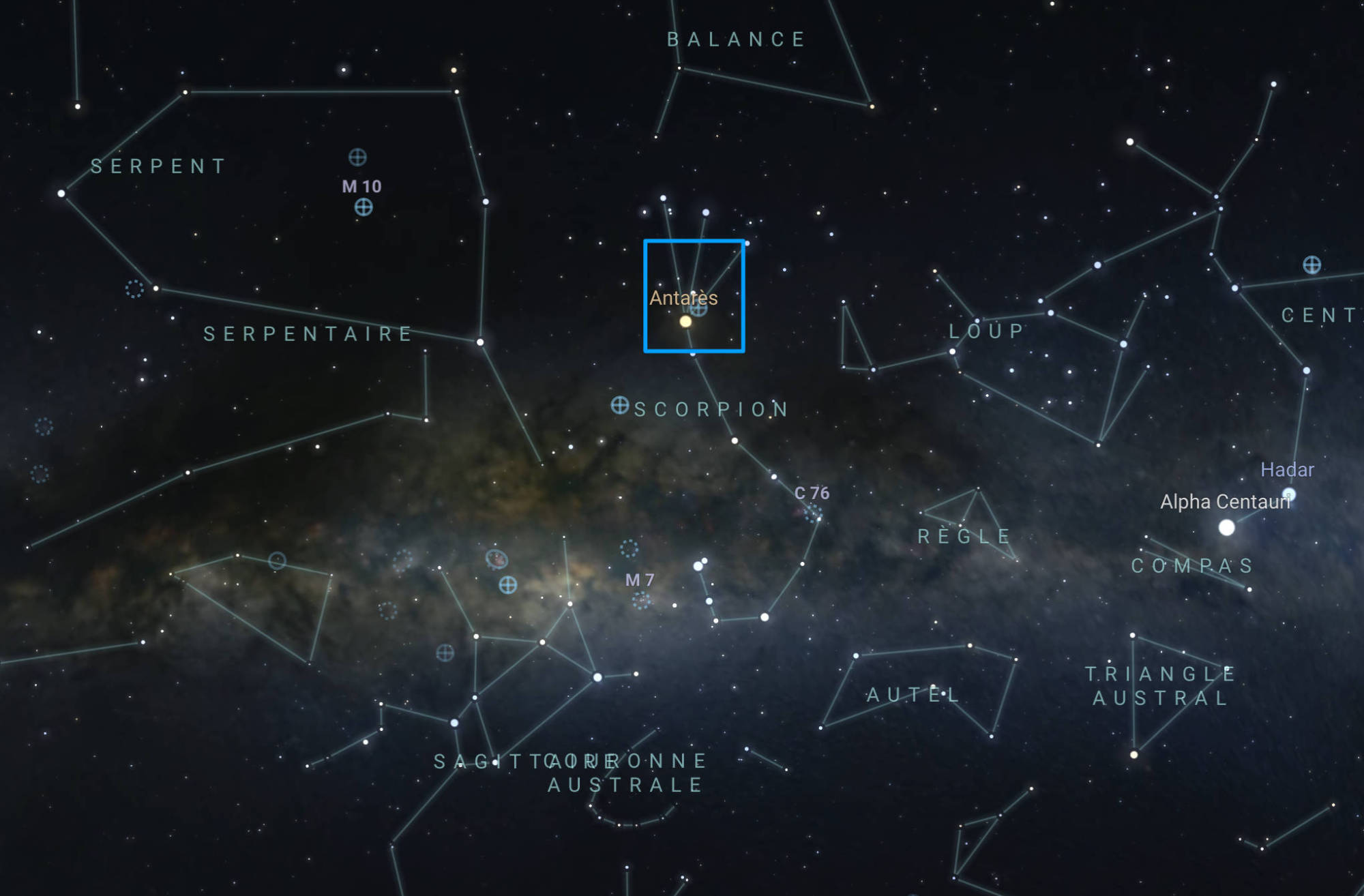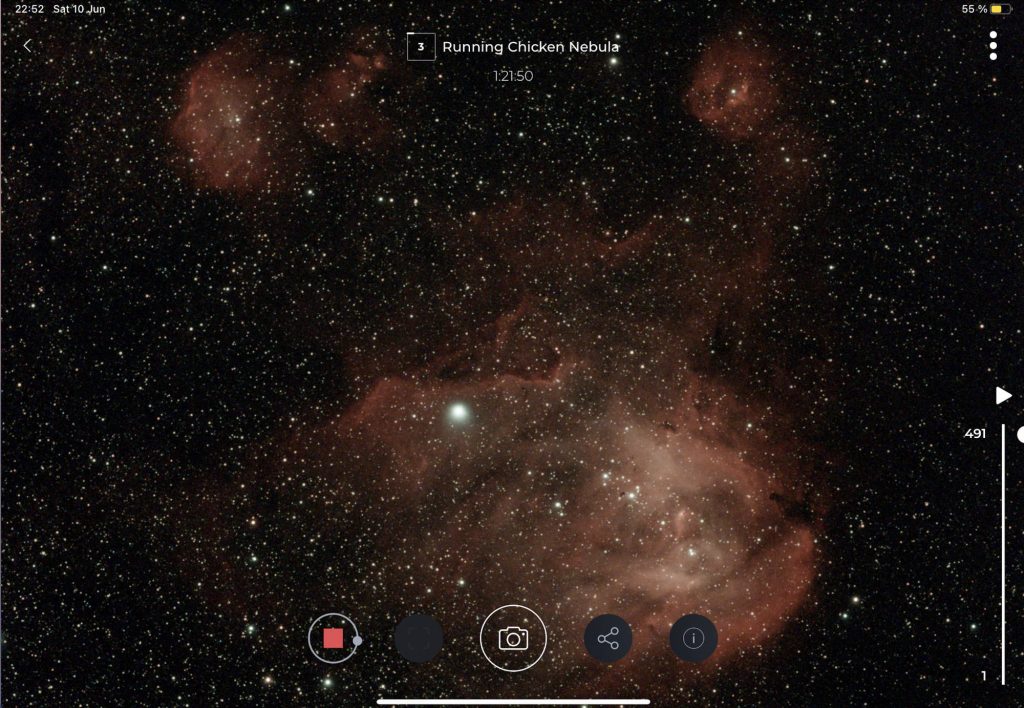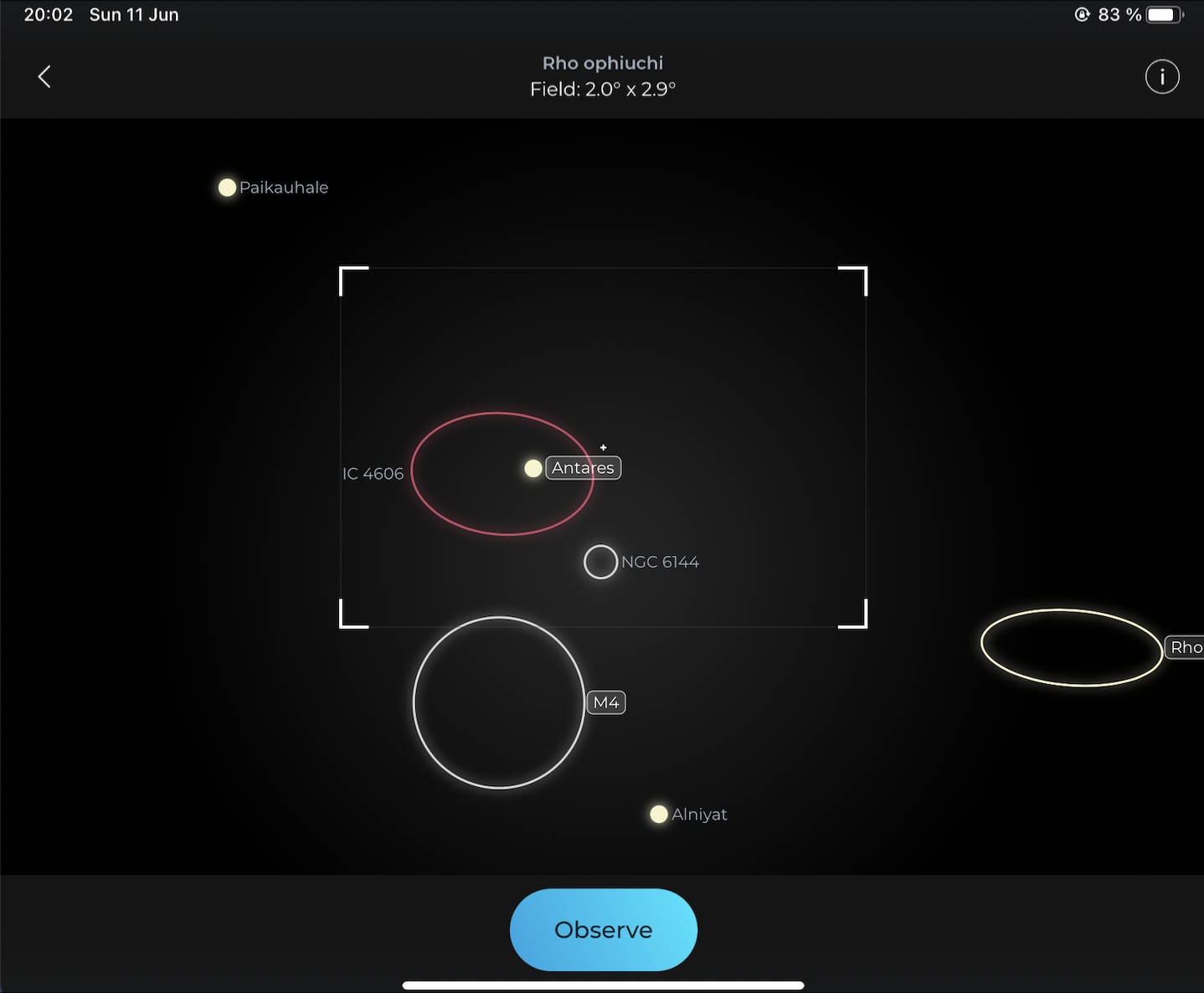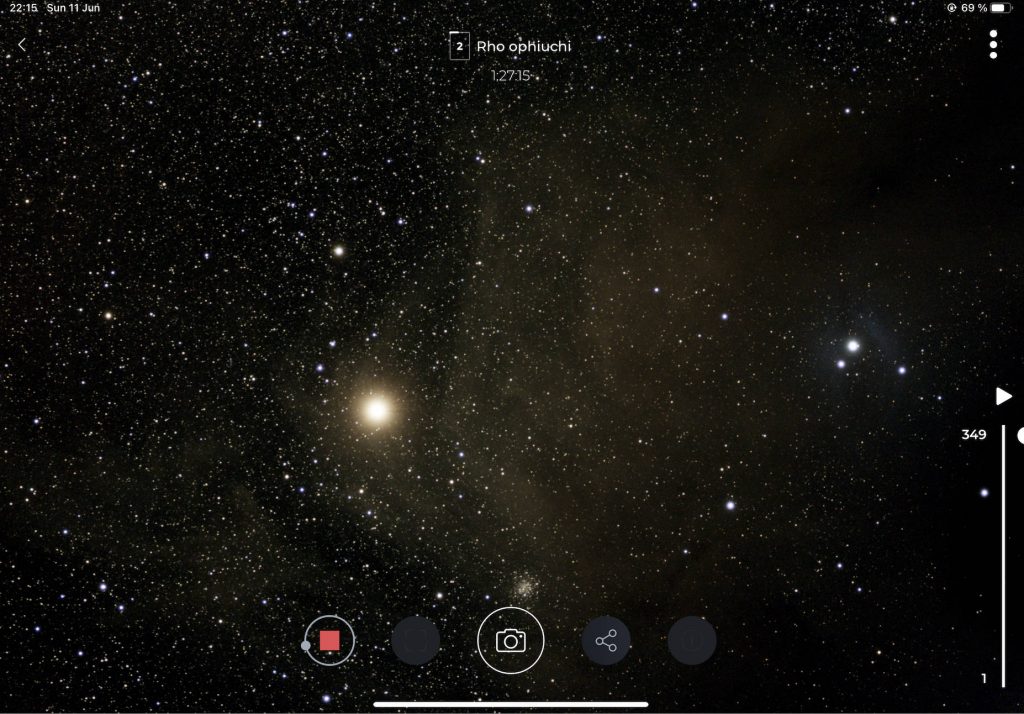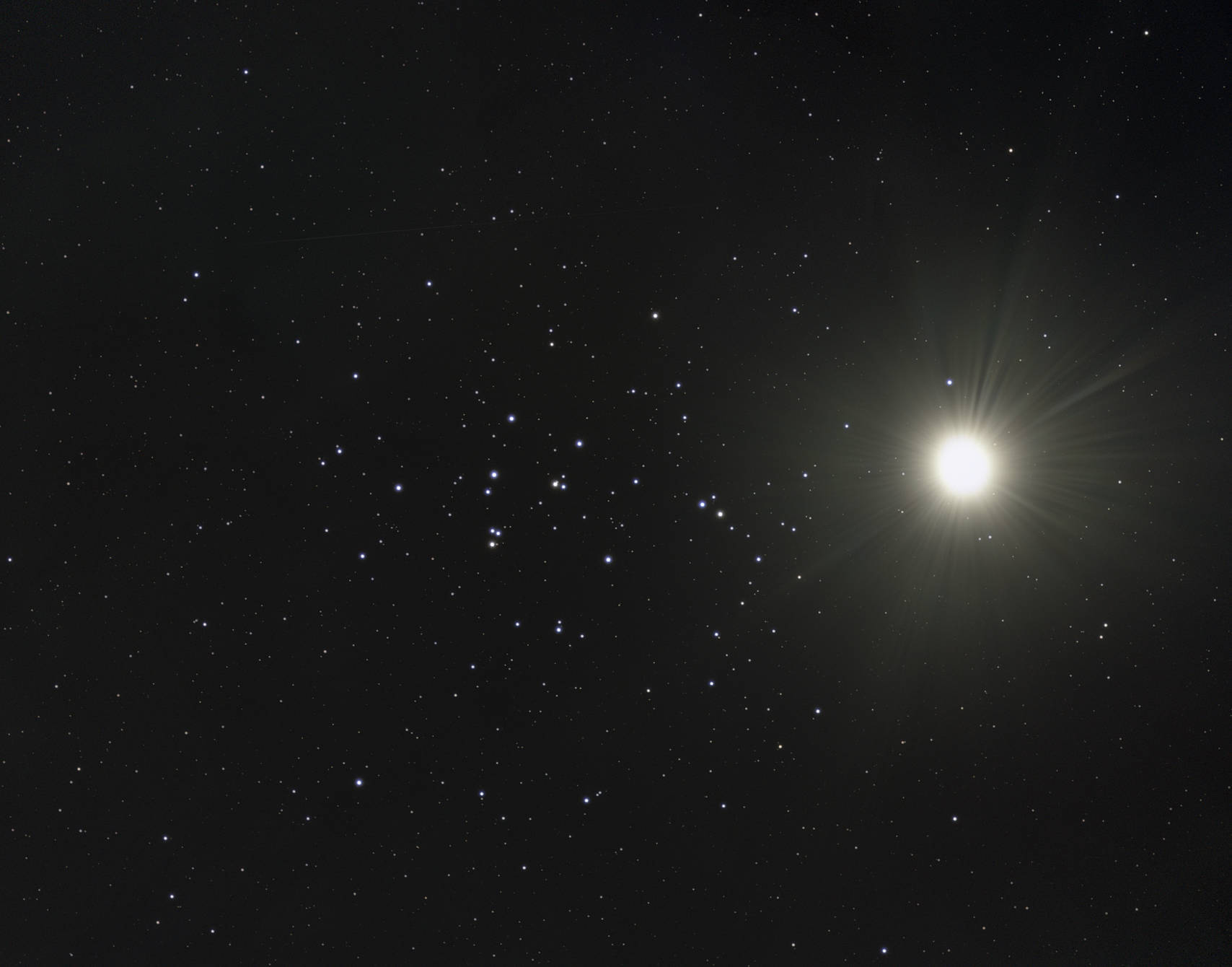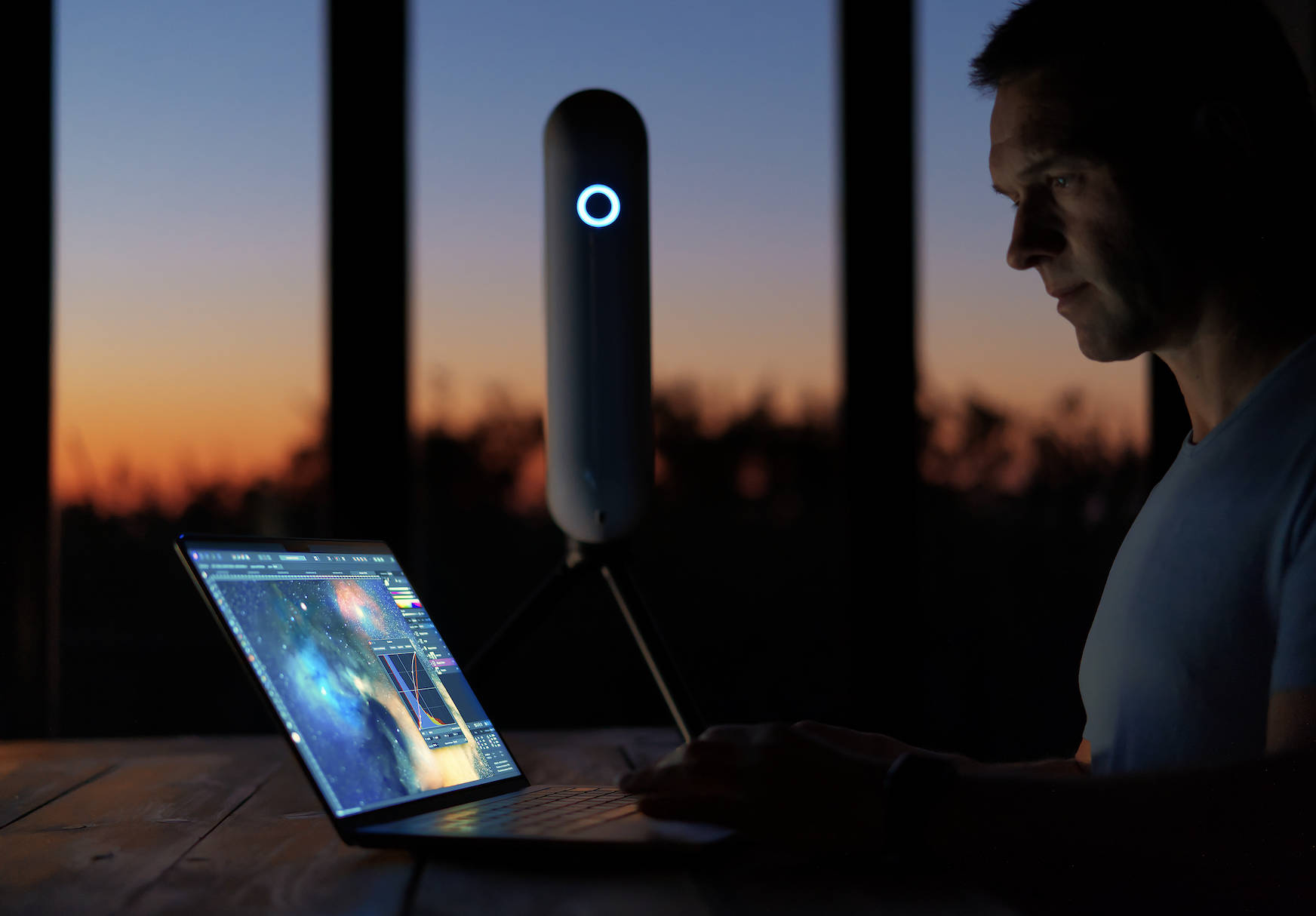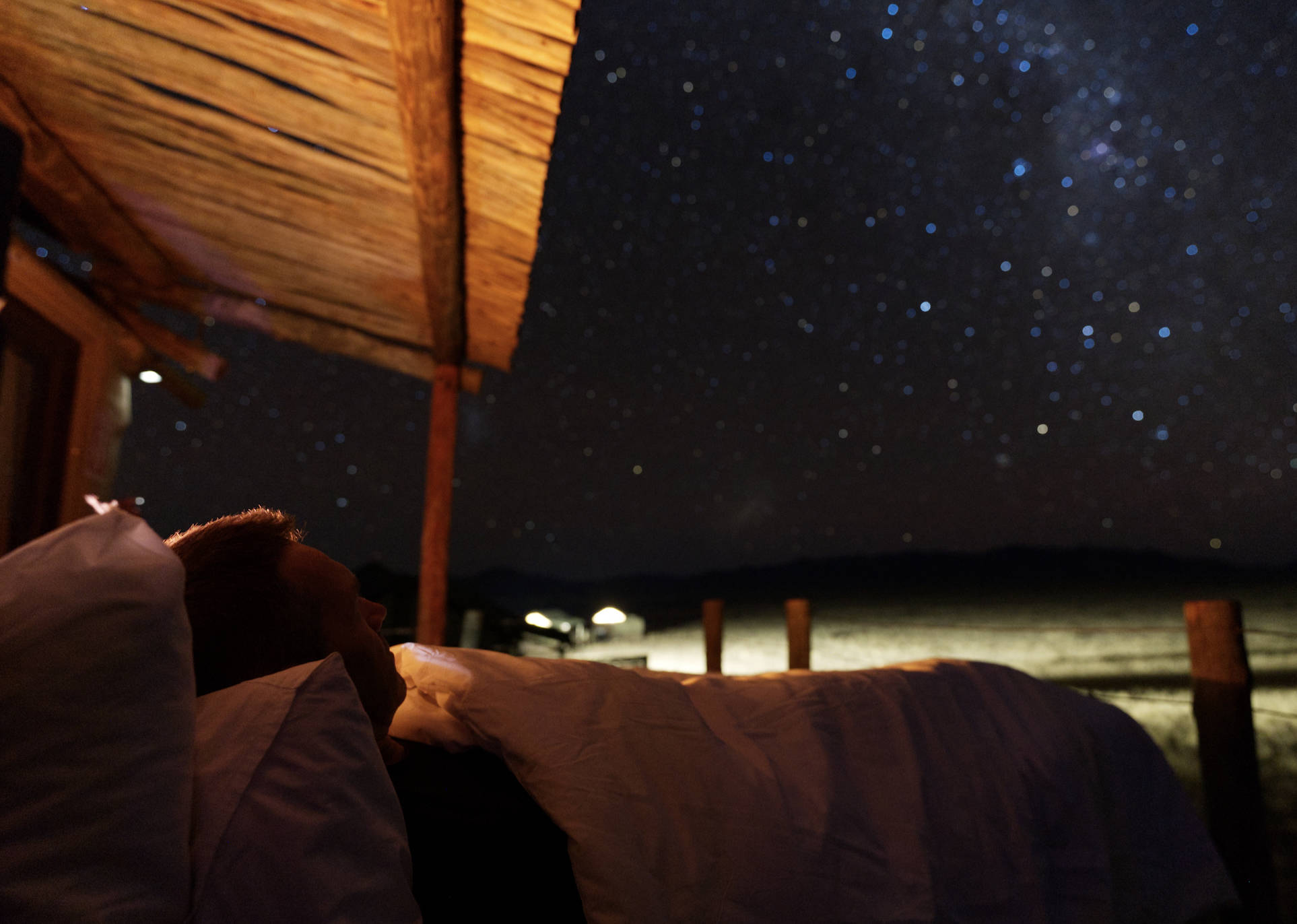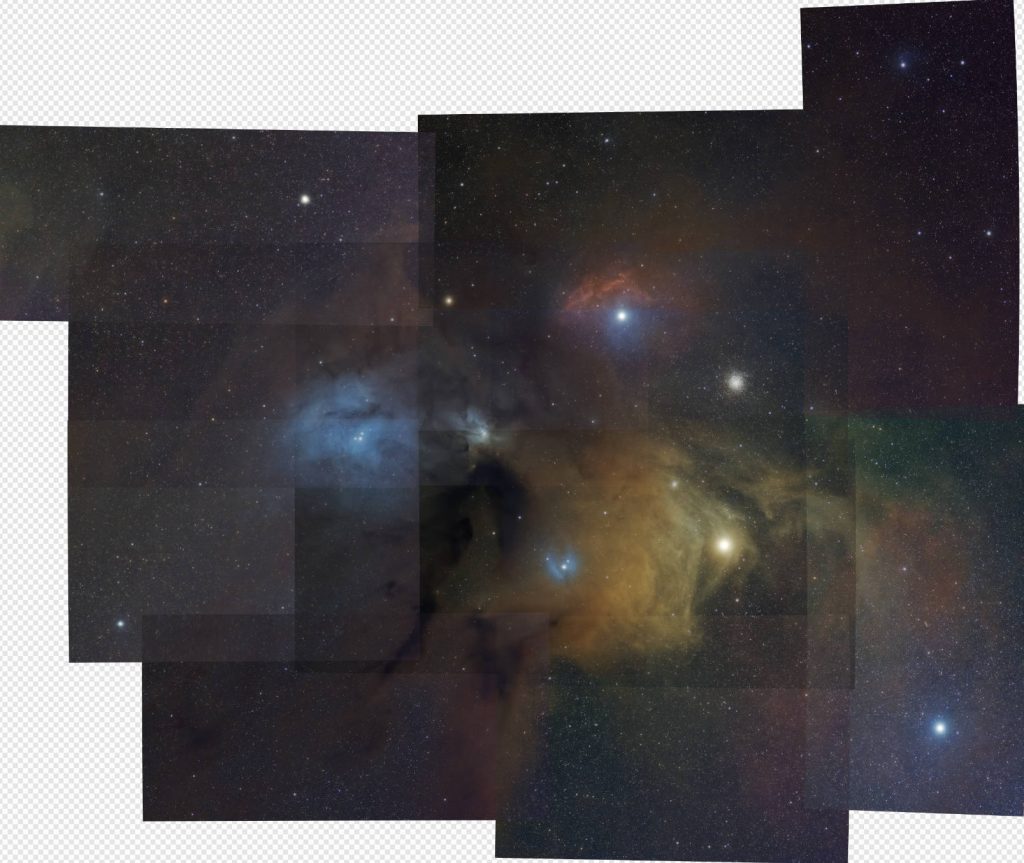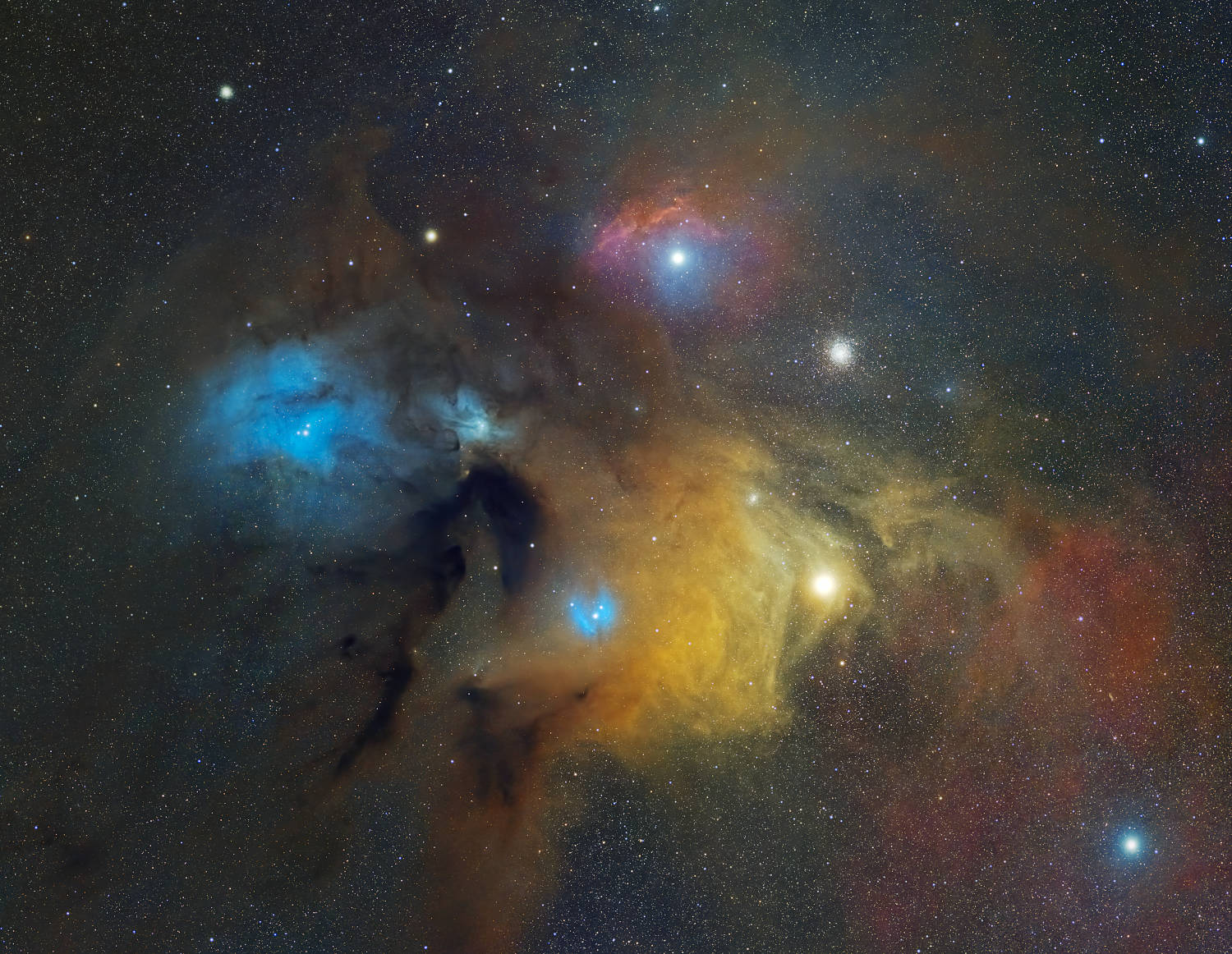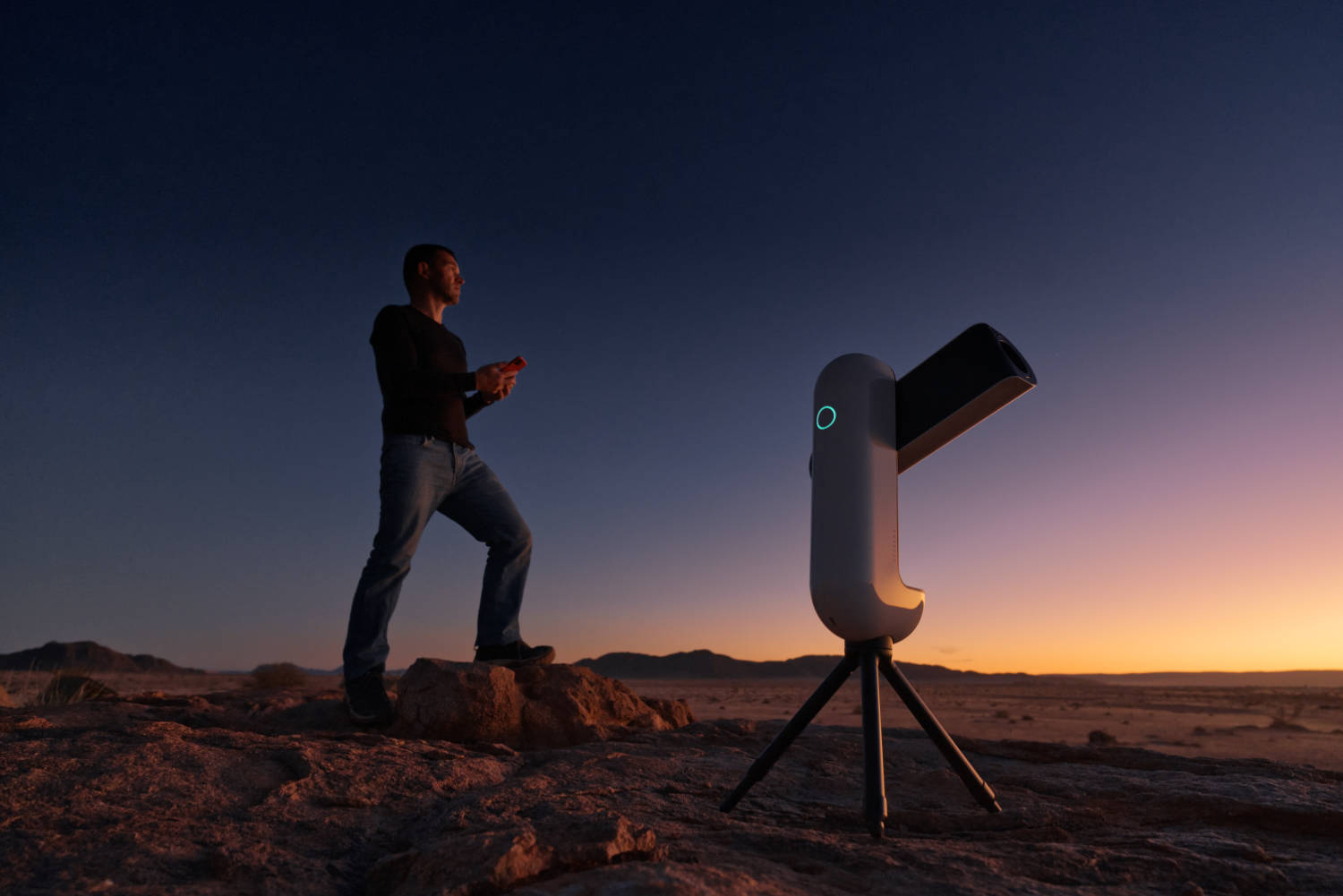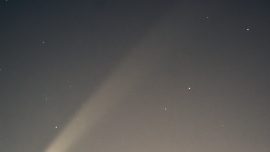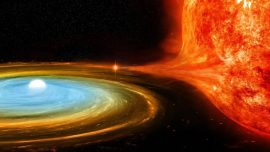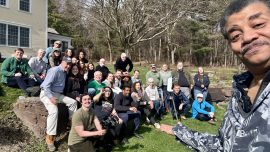Vespera & the Milky Way: A High-Definition Adventure on The Best Observation Site
On June 10th, at Hosea Kutako International Airport in Namibia, after a neverending flight, I finally arrive at my destination for two weeks dedicated to observing and astrophotographing the southern sky. I pick Vespera from the plane’s luggage compartment. It’s the perfect smart telescope for this kind of journey. Compact and lightweight, it’s easy to carry as carry-on luggage.
I grab a taxi to reach the capital, Windhoek. Along the way, a group of baboons take over the road and decide to disrupt traffic. Quite a welcoming committee, albeit a friendly one.
If we were to create a top 3 list of the best astronomical destinations in the world, Namibia would undoubtedly be among them. It boasts weather conditions that result in an exceptionally clear sky. It’s one of the least densely populated countries on the planet, with no light pollution. In the western part of the country, facing the ocean and home to the world’s oldest desert, it hardly ever rains, offering over 300 days of sunshine per year.
I hit the road towards my first observation site. After several hours on bumpy, dusty tracks, I arrive at my destination at night. I turn off the headlights, step out of the car, and turn my gaze towards the sky. Wow!!
My eyes aren’t used to the darkness yet, but it’s imposing itself upon my vision, brilliant and perfectly defined, stretching across the sky from one horizon to the other: the Milky Way. This isn’t my first time observing the sky from Namibia, and I’ve also experienced the skies of Chile. However, what I see here is even more spectacular than what I can remember.
I make my way to the hut I’ll be staying in for the first part of my journey, amid of a vast plain dominated by the arch of the Milky Way.
Vespera & the Milky Way: A High-Definition Adventure & The most beautiful place in the galaxy
The main goal of coming to Namibia is to capture high-definition astrophotography of a region of the sky that I consider the most beautiful in the Milky Way: the cloud complex around Rho Ophiuchi and Antares. This consists of pink, blue, and yellow nebulae intertwining, streaked with dark nebulae, dotted with globular clusters, and illuminated by the intense brilliance of Antares. A true fireworks display in the galaxy.
This part of the sky is observable from the Northern Hemisphere. However, the Scorpius constellation remains very low on the horizon. In the Southern Hemisphere, the Milky Way stretches across the sky from horizon to horizon, and its center nearly reaches the zenith at one point during the night.
Discover what makes Vespera the best smart telescope for astrophotography.
The journey is yet exhausting, and I decide not to dive into this project on the first night. I need some sleep, especially with the upcoming nights ahead. However, I won’t waste such a beautiful sky. Plus, I need to make sure Vespera has handled the Namibian tracks well.
Vespera is ready to operate within a few minutes. It’s perfect for a quick sky check even at the end of a long day. As a target for this first night, I choose the “Running Chicken Nebula.” I let Vespera gather light while I settle into my hut, occasionally glancing at the real-time stacking result. In the Singularity app, on the live observation screen, the nebula is clearly revealed pretty quickly. Even without processing, the view is already spectacular.
Vespera & the Milky Way: A High-Definition Adventure | Wide-Field Astrophotography using Vespera
The complex of nebulae around Antares and Rho Ophiuchi covers a vast area of the sky, spanning over 5°. Vespera‘s native field of view is 1.6° x 0.9°. Vaonis smart telescopes feature an exclusive automatic panorama capture mode. In the Singularity app, I can define an area of up to 3.2° x 1.8°, and the telescope will automatically capture the full image. This allows for photographing most large deep-sky objects in their entirety, including the Andromeda Galaxy, the Rosette Nebula, the Horsehead Nebula region, the Pleiades star cluster, the North America Nebula, and more.
The First Panorama Mode Integrated into a Telescope!
Discover the CovalENS technology available exclusively on Vaonis telescopes for obtaining wider field images, improved quality, and the freedom to choose your framing.
However, it won’t be enough to capture the entire region I’m aiming for. I need to create a mosaic. I first plan to assemble 6 images, with about a 25% overlap between each image to facilitate the mosaic assembly. To achieve good image quality, I also plan to capture between 2 and 3 hours of data for each image. Lastly, I set a minimum height of 25° above the horizon to begin the acquisition. Below 20°, atmospheric absorption degrades the quality of observation. In practice, I can only capture a single portion of the mosaic per night (taking into account the presence of the moon in the second half of the night).
A Star 800 Times Larger Than the Sun
Let’s start the project on this second night. For the first part of the mosaic, I choose to start with Antares. It’s a supergiant star, one of the largest in our galaxy. It illuminates the surrounding nebulae with a yellow-orange color, a very rare tint for nebulae. In the Singularity app that controls Vespera, I define the widest possible field around Antares and start the observation.
This is the first time I observe this region with Vespera, and I can’t remember ever seeing an image of it captured with a smart telescope before. I have no idea about what kind of result I’ll get. So, here I am, watching the capture progress with a certain excitment as the live stacking goes on. In Electronically Assisted Astronomy, faint nebulosities are not always easily visible. Revealing them requires the image processing step typical of astrophotography.
After a few dozen minutes of observation, there’s no doubt: the nebulosities around Antares are clearly visible and showcase the characteristic yellow color.
Life to the Rhythm of the Night
One night under the Milky Way follows another. I dedicate about 3 hours each night to work on the mosaic. The sky is perfect, and there’s so much to observe: the Carina Nebula, the Centaur Globular Cluster, the Small Magellanic Cloud, the Eagle Nebula, the Omega Nebula. I also take the opportunity to discover objects I’ve never observed before, like the Figthing Dragons Nebula (NGC6188 – Ara constellation).
The night starts quite early because Namibia’s sunsets are simply unmissable. I also enjoy transitory astronomical phenomena such as Venus passing through the Beehive Cluster.
Long story short : I get very little sleep at night. Additionally, I’m eager to start processing the first captured images to see how they turn out. And, the landscapes of Namibia are truly something! It would be a shame not to explore them during the day. So, I don’t get much sleep during the day either.
Vespera is running at full capacity. During the day, it can rest and recharge its battery. Where I am, there is simply no electricity. I use LED lamps for lighting, and the shower water is heated with a wood fire. Fortunately, in Namibia, there is an abundance of sunlight and the energy it provides. In just one day, my portable solar panels are able to recharge Vespera and the tablet that has the Singularity application.
Need more!
I manage to capture the 6 parts of my mosaic after 5 nights. The processing done on the first images and a basic stitching suggest a spectacular result. However, it’s obvious: the final framing is too tight, and the overall composition lacks more space.
We need to make the mosaic bigger and wider. If I want to extend it a bit on all sides, I estimate that I will need to switch to a 12-image mosaic.
I’m up for the challenge!
I take the opportunity to change my observation site and head to the Namib Naukluf National Park a bit further south. This region is designated as an International Dark Sky Reserve.
This time, I have a bit more comfort with electricity. The landscape is just as enchanting, and the sunsets are still spectacular.
There’s a huge wooden deck that allows me to roll out the bed, cleverly set up on wheels. Despite the cool nighttime temperatures at this time of year, I get to experience starry nights in the utmost comfort. What more could one ask for!
Image processing and mosaic assembly
It will ultimately take me 11 consecutive nights to capture the 12 tiles needed for the mosaic. For this kind of project, the more consistent the conditions are from one night to the next, the better the result.
I first perform a preliminary processing of each image from the 16-bit RAW file pre-stacked by Vespera. This is a huge time-saver since I don’t have to manually do the stacking (not to mention that this part of the process isn’t particularly exciting). The processing must also be as consistent as possible. If images have significantly different renderings (brightness, contrast, color, noise, details), seams can be visible in the final image. As shown in the illustration below, despite my precautions, some differences still exist, but they are relatively minor and can be handled by the software used for stitching the panorama.
Once the mosaic is assembled, I finalize the processing on the full image.
The final image covers a field of view of about 7°x5.5° with a resolution of over 56 megapixels. With another smart telescope that doesn’t have the field expansion technology that is exclusive to Vaonis telescopes, it would have been necessary to capture at least four times more images to create the same mosaic, which is 48 images – and thus at least 48 nights. In other words, a project nearly impossible to accomplish.
View the final high-resolution image
On the dedicated Astrophotography page on Vaonis website.
On Astrobin.
About the image processing
Affinity Photo software was primarily used for most of the processing and for assembling the mosaic, along with StratNet 2 for star separation.
Click here to download the raw images in 16-bit TIFF format (330 Mo) and practice image processing or test your own techniques.
Hoping you enjoyed reading our “Vespera & the Milky Way: A High-Definition Adventure” article : feel free to share and comment your thoughts about the end result.

